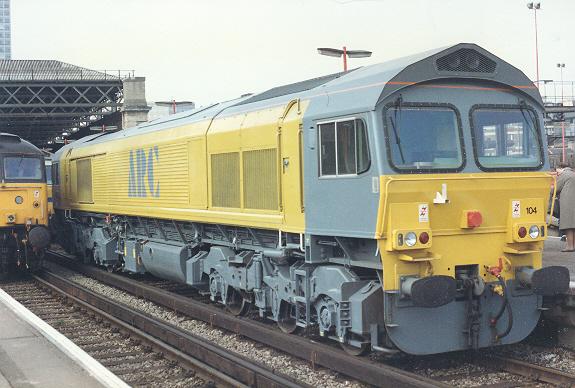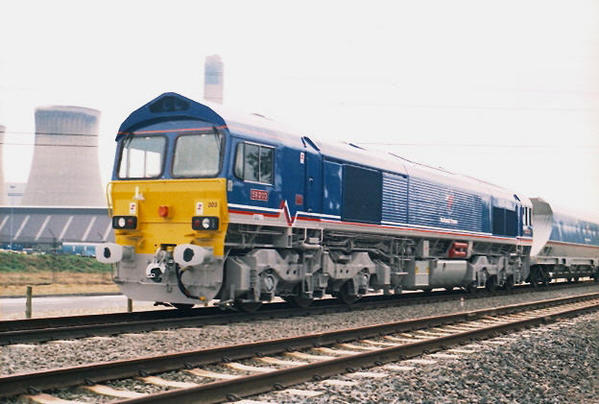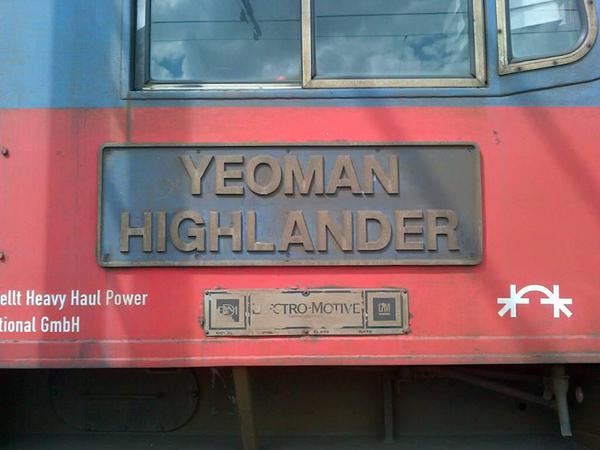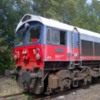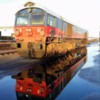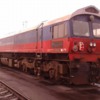During the early 1980s, Foster Yeoman, a shipper of large quantities of aggregate materials in the UK, had grown dissatisfied with the performance of existing British Rail locomotives. The company had earlier purchased an SW1001 which was performing well in its intended role as a quarry shunter. With its reputation as a builder of reliable diesel locomotives already well established, EMD received an order for four road locomotives from Foster Yeoman. These locomotives would represent the first privately owned diesel locomotives to serve in revenue earning service on the nationalized BR network. A derivation of the SD40-2, filling the order required a herculean effort on the part of EMD personnel to come up with a design which would enable the locomotives to be built in a configuration satisfying the restrictive loading gauge of Great Britain. Built in 1985 and placed into service in 1986 (a fifth locomotive was added in ’88), the Foster Yeoman Class 59s set a new standard for diesel locomotive reliability on the UK network. Impressed by the performance of the new locomotives, Amey Roadstone Construction and National Power subsequently placed orders for four and six 59s, respectively, of their own. The Foster Yeoman 59s were built at EMD/La Grange while the ARC and National Power locomotives were constructed at the GMD Canadian plant at London, Ontario.
With a rating of 3,300 British HP coupled with a maximum tractive effort in excess of 110,000 pounds at approximately 7 MPH and a continuous 65,000 pound rating at about 15 MPH, the Class 59 has built a reputation as a powerful hauler which makes it well suited for its intended role as a hauler of trains of heavy bulk commodities over routes which can feature fairly severe grades for mainline trackage. In fact, in 1991, 59005 set the European haulage record for a single locomotive when it was assigned a stone train weighing approximately 12,000 tons. Although a total of only fifteen Class 59s was built, the class established itself as arguably the most reliable diesel to ever serve on the mainline in Great Britain. This reputation provided the foundation for the Class 66 which was introduced to the network in the 90s and quickly became the dominant diesel locomotive on the British network with hundreds built but that’s a subject for another thread.
Although Class 59 locomotives were delivered as new to just three customers, through acquisition and consolidation, they have worn a wider mix of company names and liveries. The pictures below depict this variety. From top to bottom we have Foster Yeoman, ARC, National Power, Hanson (parent company of ARC), Aggregate Industries (of which Foster Yeoman is now part), Mendip Rail (a train operating company created by Foster Yeoman and Hanson to increase efficiency of rail operations), English Welsh & Scottish which acquired the rail assets of National Power and DB Schenker which then acquired EWS. One locomotive, 59003, was exported to Germany in 1997. This past August, the locomotive was purchased by GB Railfreight and has been repatriated to Great Britain where it is presently being reconditioned for a return to service.
Bob





